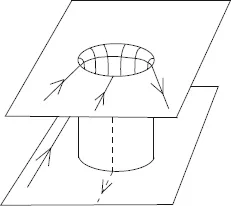
Introduction to General Relativity
Solutions to Problems
John Dirk Walecka
- 216 pagine
- English
- ePUB (disponibile sull'app)
- Disponibile su iOS e Android
Introduction to General Relativity
Solutions to Problems
John Dirk Walecka
Informazioni sul libro
-->
It is important for every physicist today to have a working knowledge of Einstein's theory of general relativity. Introduction to General Relativity published in 2007 was aimed at first-year graduate students, or advanced undergraduates, in physics. Only a basic understanding of classical lagrangian mechanics is assumed; beyond that, the reader should find the material to be self-contained.
The mechanics problem of a point mass constrained to move without friction on a two-dimensional surface of arbitrary shape serves as a paradigm for the development of the mathematics and physics of general relativity. Special relativity is reviewed. The basic principles of general relativity are then presented, and the most important applications are discussed. The final special topics section takes the reader up to a few areas of current research. An extensive set of accessible problems enhances and extends the coverage.
As a learning and teaching tool, this current book provides solutions to those problems. This text and solutions manual are meant to provide an introduction to the subject. It is hoped that these books will allow the reader to approach the more advanced texts and monographs, as well as the continual influx of fascinating new experimental results, with a deeper understanding and sense of appreciation.
-->
Request Inspection Copy
--> Contents:
- Preface
- Introduction
- Particle on a Two-Dimensional Surface
- Curvilinear Coordinate Systems
- Particle on a Two-Dimensional Surface–Revisited
- Some Tensor Analysis
- Special Relativity
- General Relativity
- Precession of Perihelion
- Gravitational Redshift
- Neutron Stars
- Cosmology
- Gravitational Radiation
- Special Topics
- Appendices:
- Reduction of g μν δR μν to Covariant Divergences
- Robertson-Walker Metric with k ≠ 0
- Bibliography
- Index
-->
--> Readership: Advanced undergraduate or graduate students in mathematical and theoretical physics. -->
General Relativity;Special Relativity;Riemannian Geometry;Precession of Perihelion;Gravitational Redshift;Neutron Stars;Black Holes;Cosmology;Gravitational Waves;Cosmological Constant;Inflation0
Domande frequenti
Informazioni
Chapter 1
Introduction
Chapter 2
Particle on a Two-Dimensional Surface
Solution to Problem 2.1

Chapter 3
Curvilinear Coordinate Systems
Solution to Problem 3.1








Solution to Problem 3.2








